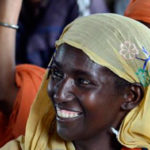Approaches to mapping hate speech online can be classified into three principal groups based on their purpose: Real-time monitoring and mapping: These projects, the best known of which is the Umati project in Kenya, aim to provide continuous monitoring of online media. Such projects are rare, but they have the potential to serve as early warning systems or enable a reaction ...» more
Statebuilding and peacebuilding
Statebuilding and peacebuilding, while conceptually distinct, are becoming more closely integrated in academic and policy circles. This Topic Guide looks at the links (and tensions) between statebuilding and peacebuilding, how these activities interact, and how they can be approached in practice. A related Guide looks at State-Society Relations and Citizenship in Situations of ...» more
Supporting local governance in protracted conflicts
Successful interventions to support the delivery of services by local governments and administrations have been undertaken in a number of countries, including Afghanistan, Nepal, Somalia and Sudan. The majority of these interventions fall into the community-based approaches category. These are often used in areas where there is no effective local government or where supporting ...» more
Gender
Gender is a way of looking at how social norms and power structures affect different groups of men and women. Understanding that men and women, boys and girls experience poverty differently, and face different barriers in accessing services, economic resources and political opportunities, helps to target interventions. ...» more
The impact of conflict on poverty
There is consensus in the literature that conflict impacts on poverty, but evidence on how this impact occurs is often limited, unsystematic, and sometimes contradictory. Much of the literature also discusses how poverty can contribute to conflict and the possibility of cycles of poverty and conflict as a result. Overall the latest evidence suggests that violent conflict ...» more
Grievance Redress Mechanisms in Pakistan
Research for this report identified five GRM examples, though with varying levels of evaluation and assessment documentation. Many of these GRMs would not strictly be described as models but rather programmes, or sets of activities within programmes, that provide redressal of grievances. There is not a definitive list of essential components for GRMs. Consequently this ...» more
Interventions to counter hate speech
There is limited evidence on the effectiveness of interventions to counter hate speech. There is a lack of rigorous impact evaluations in this area and those that do exist tend to focus on individual case studies. Interventions to counter hate speech which have had some success include: Television programmes: In Kenya four episodes of a popular television series were ...» more
Urbanisation and conflict in Pakistan
There is a broad body of literature on violence in Pakistan, however less specific material drawing links between urbanisation and incidences of violence. Some of the main links between urbanisation and violence identified in the available literature include: Competition for resources, particularly land, water and housing. Weak infrastructure. Demographic change, ethnic ...» more
Costs of peace processes
The rapid review indicated that there is limited literature available on this topic. The information uncovered by this rapid review focuses mainly on the latter stages of a peace process and the core components of supporting the success of the peace process. These include, for example, disarmament, demobilisation and reintegration (DDR) processes, dialogue forums, transitional ...» more
Social mobilisation in urban contexts
Suggestions for improving urban social mobilisation include: Self-help groups: Creating community groups for expectant mothers, for example, or certain types of workers, can provide a basis for social support. These can used as a basis for social mobilisation to enable the public to demand and gain access to services. Issue-based targeting of individuals and groups: This ...» more
Elected women’s effectiveness at representing women’s interests
This rapid literature review collates evidence on women’s actions and interactions in parliaments in Africa. The literature mostly focuses on Rwanda, South Africa, Uganda and Tanzania (Bauer, 2012). There are several consistent findings from African countries, which enables drawing together key lessons: Effectiveness at representing women’s interests: The presence of ...» more
Non-food items (NFIs) and the needs of women and girls in emergencies
The NFIs which best meet the basic needs of women and girls in emergencies include: Hygiene/dignity kits: women and adolescent girls require locally appropriate sanitary items to manage their menstrual hygiene. These may be reusable cloth or disposable sanitary pads. The opportunities for privately washing, drying, and disposing of sanitary cloths or reusable pads need to be ...» more
Harmful traditional practices in diaspora communities
In general, the trajectory of change among the diaspora communities discussed in the literature surveyed for this report is away from carrying out HTPs. There are fewer examples identified of communities wishing to uphold these practices in their new countries. The literature identifies several factors which impact on change in attitudes and practices: Legality: All host ...» more
Funding appeals for complex humanitarian emergencies
Key findings: It is possible to derive some key factors from the available literature: Needs-based allocation: This is a core principle of humanitarian assistance. All funders use needs assessments in their original funding allocations, and many changes to funding are preceded by needs assessments. Tipping points: Most protracted crises receive a steady and/or low level of ...» more
Key actors, dynamics and issues of Libyan political economy
The scene of actors in Libya is highly fragmented, localised and fluid. The main division seems to have been between forces that support continued changes (‘pro-revolution’) and others that do not (‘anti-revolution’). Community actors: - Geographic communities. Beyond differences between Cyrenaica, Tripolitana and Fezzan, local communities have been the fundamental actors. ...» more
Post-2015 accountability mechanisms
Key messages: The Post-2015 Development Agenda refers to a currently ongoing process of defining the future global development framework, which will succeed the United Nations (UN) Millennium Development Goals (MDGs). The details and wording are yet to be agreed, but there are, however, a significant number of proposals for goals and targets, and with them descriptions, in some ...» more
Gender in fragile and conflict-affected situations
This rapid literature review, in annotated bibliography format, collates a large amount of literature published in 2013 and 2014 (up to April 2014) on the topic of gender in fragile and conflict-affected situations. It is not a systematic or exhaustive review, but does provide a comprehensive overview of the literature available. It includes all types of available written ...» more
Lesbian, gay, bisexual, transgender and intersex rights in national human rights institutions
NHRIs almost unanimously take a universal human rights stance which is validated and backed up by the UN. This institutional support allows NHRIs to criticise governments for failing to support certain human rights. NHRIs often emphasise that LGBTI rights are contained within existing UN rights principles, particularly the rights to privacy, health, life, freedom from ...» more
Evaluations of scaling up
Factors that affect the success of scaling up include: Politics: A number of evaluations suggest that political support is a key success factor, and offer recommendations on how to build this support. Demonstrating how the programme will help achieve key government goals, as well as building personal connections with government officials. Decentralisation can make scale up ...» more
Urban humanitarian crises
The degree to which a city is vulnerable to humanitarian crises depends on location-specific physical, social, economic and environmental factors. The literature suggests that geographically, cities in Asia are the most vulnerable to natural disasters. Asian cities also experience the most diverse range of natural disasters. The main causes of urban vulnerability are often ...» more


